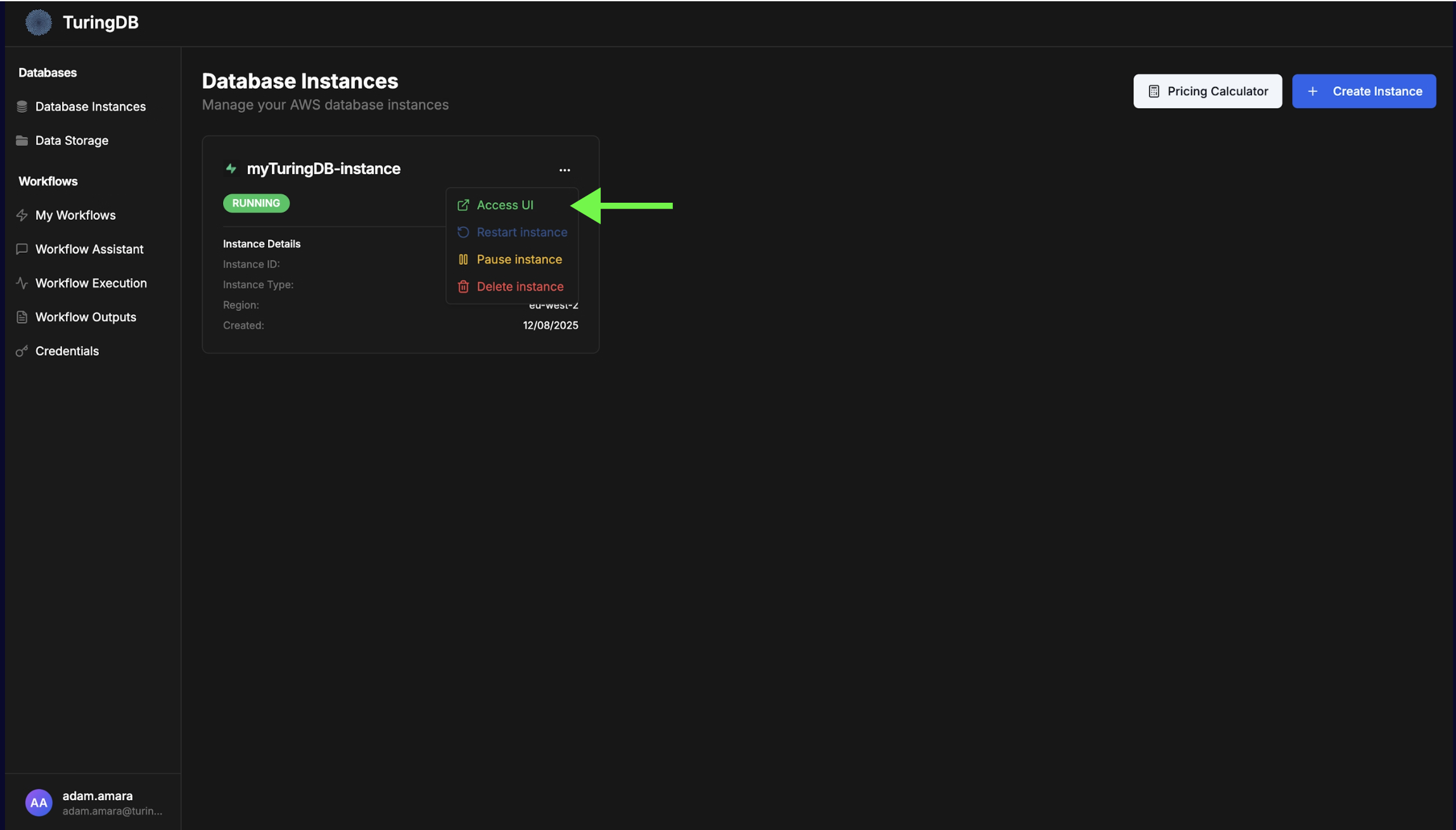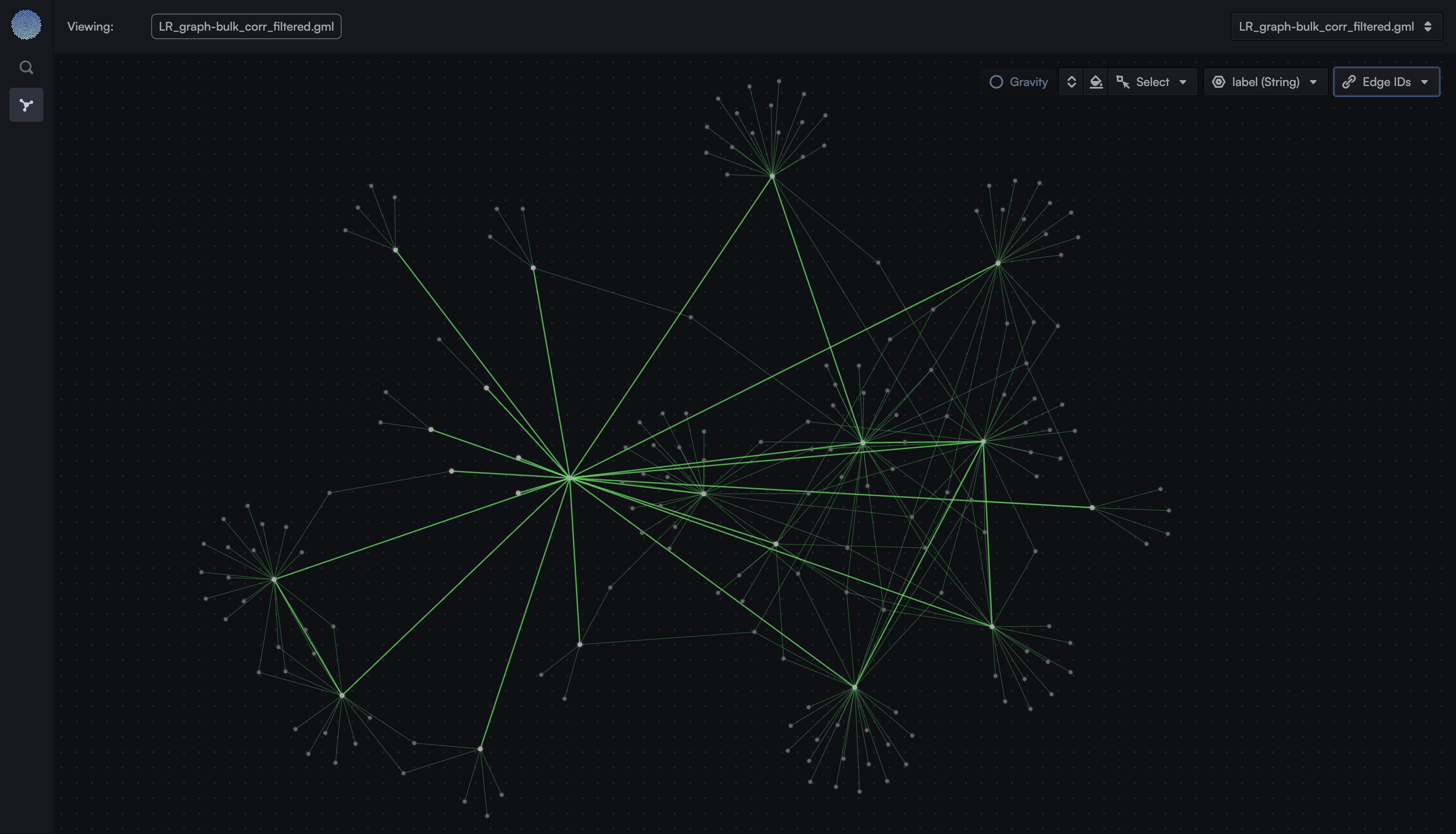1
Create your TuringDB account
Sign up on console.turingdb.aiUse your free credits (with your promo code or contact us at founders@turingdb.ai to get your code) or directly purchase new credits (in Profile → Settings → Billing).
2
Create your instance in the TuringDB Cloud UI
In Database Instance -> Create your first instance
3
Copy your Instance ID from the Database Instances management page
Keep the instance ID as you will need it on step 5)
4
Get API Key from the Settings in UI
-> Click on your profile icon (bottom left) -> click on Settings (on the left panel of the pop-up window) -> Click on the API Keys section -> copy your API Key (keep it as you will need it on step 5)
5
Install TuringDB Python SDK
Using or using the
pip:uv package manager (you will need to create a project first):6
Exemple to create and query a graph
Create graph → list graph → create node & create edge → commit → list graphs → match query
Python SDK
User Interface
You can build a workflow (in the UI and very soon in Python with our open-source agentic & analytical workflow package) to integrate data in the TuringDB graph database.See UI TutorialSee Workflow Exemples7
Visualise the graph you have created in TuringDB
Open the graph visualiser from the instance running your TuringDB graph, click on the 3 dots in the top right and then on Access UI


Exemple of a biological interaction graph built in TuringDB:
- Choose on the top right the graph
- Search & select a node(s) of interest (magnifying glass button on the left)
- Then go to visualiser (network logo) and you can start exploring paths, expanding neighbours, inspect nodes (parameters, hyperlinks, and texts stored on the nodes)

You are done!

